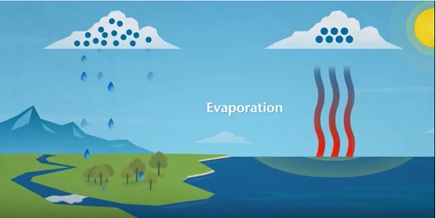1. Drainage Basin Hydrology and Geomorphology
Lesson Plans for Drainage basin Hydrology and Geomorphology
These learning activities cover everything in the IB guide for this topic. Lesson plans include resources to use on an interactive whiteboard and worksheets to print. The pages have full student access to give maximum flexibility to the teacher and the student. There are theoretical notes for extended reading and teacher notes at the top that provide timing information lesson objectives and activity instructions.
1. Drainage Basin Hydrology and Geomorphology
Syllabus
The drainage basin as an open system with inputs (precipitation of varying type and intensity), outputs (evaporation and transpiration), flows (infiltration, throughflow, overland flow and base flow) and stores (including vegetation, soil, aquifers and the cryosphere)

Drainage Basins
This page introduces students to drainage basins, their characteristics and the physical processes and properties of the water budget. It develops a number of visual and interactive resources that help students to understand the scale of these processes. It introduces students through a starter animation on the Mississippi. There are then a series of quick drag and drop and match-up activities to process new vocabulary.
The Water Budget
This page looks deeper at the water budget. It uses the drainage basin features and models to focus students' attention on the components of the water balance. A starter activity is a quick card sort based on the hydrological cycle.. Then students should investigate the water balance for the River Teviot in Scotland. Students can then discuss the implications of freshwater storage for humans.
Syllabus
River discharge and its relationship to stream flow, channel characteristics and hydraulic radius
River processes of erosion, transportation and deposition and spatial and temporal factors influencing their operation, including channel characteristics and seasonality
The formation of typical river landforms, including waterfalls, floodplains, meanders, levees and deltas
Hydrology and Geomorphology
This page provides different resources and activities for 2-3 lessons focused on the central idea of how river shape the landscape. It develops the key processes of erosion, transportation and deposition and focuses on different landforms unique to upper, middle and lower course of the river. It features a number of lesson resources including starters and main activities, interactive resources and video clips and animations.



